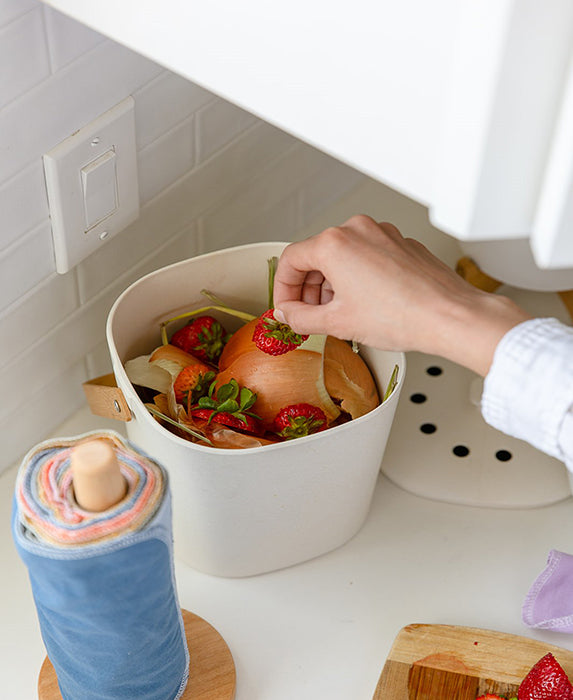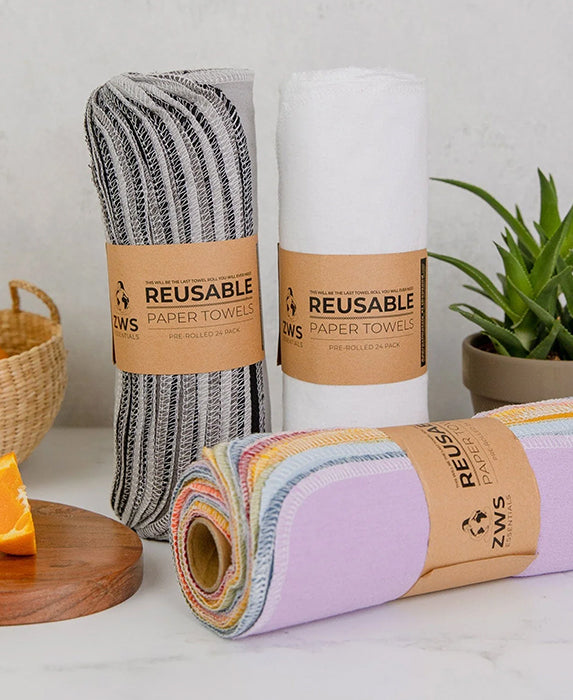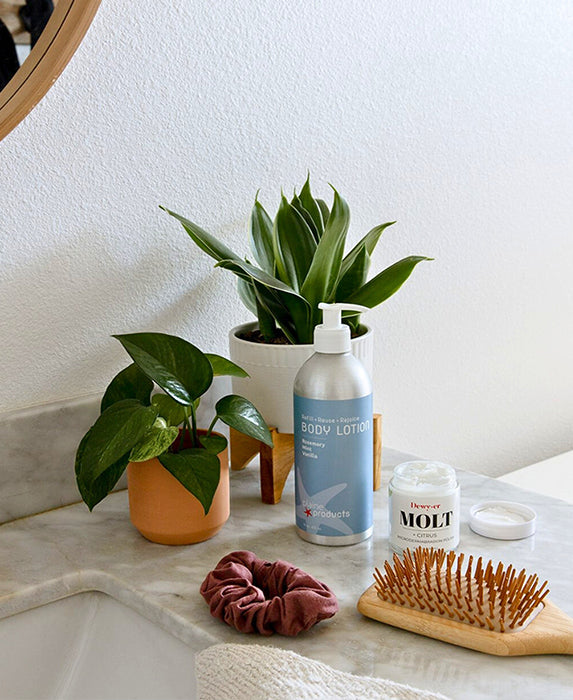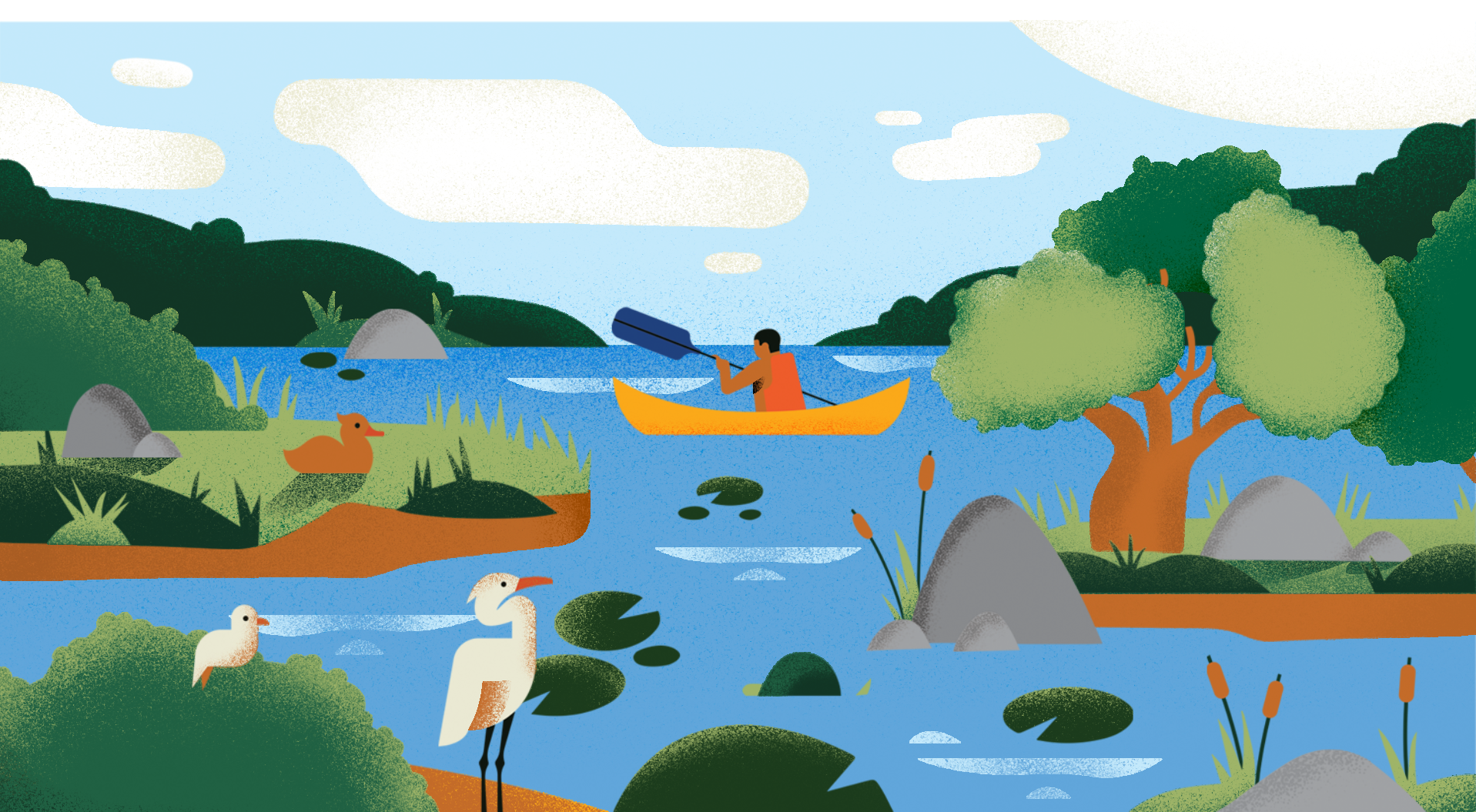When I first heard of the “Buyerarchy of Needs” I was confused. That didn’t sound like what I had learned about in high school psychology… but it is similar! The Buyerarchy of Needs was created by Sarah Lazarovic, a Canadian designer and writer, and its purpose is to give consumers a path out of overconsumption and start making their closet more sustainable. Can you use something you already have to get the job done when you need something? No? Can you borrow it from someone else? And so on and so forth. The last option is to buy something new, but even then, trying to find it made ethically or sustainably. It’s a pretty neat concept, right?
Today, join EarthHero team member Grace in this Sustainability Story as she uses the buyerarchy of needs and a few other examples to help you begin to transition your closet to be more sustainable.
What You’ll Learn:
- What the ‘Buyerarchy of Needs’ is
- What a ‘purchase pause’ is and how it can help you
- How to sustainably fill in the gaps of your closet
- What a clothing swap is and how it can help you
Step 1: Take a good, hard look at your clothes
Block off an afternoon (or a day) to go through your closet. Binge Marie Kondo while you’re at it if you haven’t already! My suggestion is to try everything on and think of the last time you wore it. How did it make you feel (did it spark joy)? How long ago was it? Some people even keep track of what they wear for a month and get rid of anything they don’t wear that in that time period. It might be time to donate anything that is in season and hasn’t been worn in over two months!
Look for things that don’t fit, are stained, or need repairs. Things that are in non-wearable condition go in the trash pile (in this case, trash means things that cannot be donated to Goodwill, and will have to be otherwise recycled through a textile scrap take back program – do a quick Google search to see what facilities are options are near you! For example H&M has one!), things that don’t fit or you don’t like anymore go in the donate pile, and out of season things go into storage. Alright, now we’ve got a place to start!

Step 2: Consider a purchase pause
Now you know the kinds of things you actually wear. This is a great time to consider a purchase pause! A purchase pause is when you commit to not buying any new *fill in the blank* for a certain amount of time because not buying anything is the most sustainable way to consume.
Purchase pauses are also good to implement in your life if you feel like you are mindlessly buying things! They help you look at what you really need and give you a reason to pass on things you’d otherwise just buy to buy. Decide on the length of time- two weeks, a month, six months- the possibilities are endless. This isn’t a strict science, just pick something that sounds doable to you! Try to wear only the clothes you have left in your closet for your length of time and every time you find yourself wanting or needing something, start a list. At the end of your purchase pause, you can refer back to your list for what to start shopping for!
During your purchase pause, there will probably be an occasion that you’ll find you need something you don’t have. And if nothing you already own works – then borrow! Remember what mom taught you as a kid? Sharing is caring! Reach out to a friend and see if there’s something you can borrow that will fit the bill. Sometimes being a sustainable shopper means buying nothing at all!

Step 3: Clothing swap with friends
Now that you know what kinds of things you actually like wearing and have a list of what else you feel you need to fill in the gaps in your wardrobe, you can start shopping again finally! But where to start (hint: not in a store!)?
Have you ever heard of a clothing swap? You’re just swapping clothes that you don’t love anymore or don’t fit, giving them new life and a new home before donating them. I like to get a few friends together to swap clothes, and then make it a fun afternoon as well! I tend to also push my friends to clean out their closets, or they sometimes will see how well I’m doing with organizing mine and want to learn how they can get theirs that organized as well! That way everyone is a bit more willing to participate in the swap.
To swap, everyone brings their items to one place and it’s basically like a garage sale except you’re just trading items! Dump those bags of clothes out and start! I don’t make it a one-for-one item policy, anyone can take however many items they want. The idea of a swap is to find new homes for the clothes so that they don’t go to waste! At the end of the day, donate the clothes that no one took- you can even continue the fun and go donate everything together!

Step 4: Thrift
So, you’ve already used what you have, borrowed, and swapped. What’s next? Thrift! Thrift stores are places that sell secondhand and donated items- think Goodwill, the Salvation Army, Plato’s Closet, Buffalo Exchange, etc. Chances are that there are many other smaller, local thrift stores near you too! These stores are great because they have low prices and a wide variety of styles and sizes.
Some stores that also sell secondhand items are consignment stores, where the store takes your clothes from you and they give you a portion of their selling price when they sell. These stores are great, too, and tend to have ‘nicer’ brands, although I’ve always liked traditional thrift store prices better and have had great luck finding amazing brands there!
Once I found a pair of new Levis jeans with the tags still on at a thrift store. What a good find, right?! Even though they were still a typical brand that’s not considered sustainable, buying these jeans secondhand was a win in my book because no new resources were needed to make these jeans. That’s why shopping secondhand is so important and great- for every item you buy secondhand, you are stopping emissions, gallons of water, energy, and many other resources from needing to be used to make something new. By slowing the demand for new goods, their production will eventually decrease, and we are growing the market demand for used goods!

Step 5: Make something!
Do people call you crafty? Have you been wanting to get back in touch with your creative side? If so, making a piece of clothing (or a household item) is a great way to do that and also be more sustainable! Learning a new skill is great in so many ways! Because you are making the item yourself it will be perfectly customized to you… and taking the time to try something new is always fun!
Making something yourself also allows you to completely control the materials and supply chain, which are two of the largest ways that typical clothes are unsustainable! Even if you can’t personally make the item yourself and you know someone who can (hello Grandma who can knit!) that counts too. There may even be a class taught locally where you can learn a new skill like knitting, sewing, basket weaving, and more. Who knows, you might find a new hobby along the way! That’s been one of my favorite parts about beginning to transition my closet into being more sustainable. My grandma taught me how to sew when I was younger, and I didn’t think much of it. Now I use it to mend holes in hats, fit ripped sleeves, and hem pants. It is so useful!

Step 6: Buy New (responsibly)
So after you’ve tried to use what you had, borrow, swap, thrift, or make something…. if none of that works for what you need… then we’re back at buying new. But don’t just run back to the mall! Make this new purchase one that counts and will last for years. Quality over quantity is important to remember.
Many eco-friendly fashion brands have been popping up over the years as ‘sustainable fashion’ becomes a buzzword. So, how do you know which brands are for real and which are just greenwashing you? Look for brands that have measurable certifications and claims like OKEO-TEX Certified, GOTS Certified Organic Cotton, Certified B Corporation, and Fair Trade Certified. Additionally, look at the brand’s production methods. Do they pay their workers fairly and promote safe labor practices? What kind of fabric is it made out of, natural or synthetic?
Some of my favorite sustainable fashion brands on EarthHero are tentree, Maggie’s Organics, Nau, United by Blue, and SO many more. If you’re going to be buying an item new, try your best to make sure that it’s made from a brand who truly cares about sustainability. To be honest though, buying from brands like this can definitely be expensive. For certain items that I can’t thrift or are core pieces, the expense is accepted because I know that I will use it for a long, long time and that it will last that long.
I’ve really only just begun my sustainable fashion journey, leaving my closet as a mix of thrifted items, quality brands, hand-me-downs, borrowed items, one attempt at knitting, and a few new, quality, sustainable pieces from brands I fully believe in. I still do a purchase pause about twice a year and even after three years it really helps me. Most importantly, after these few years of trying to be a more conscious shopper, I find myself valuing quality over quantity and not being *as* pulled by the sparkle and shine of each new season’s catalog of items and new display.
I definitely still buy a few things that are not on my list or would be qualified as sustainable. Now, when I see them while cleaning out my closet, I know I’m making room for pieces I will love more, that the ones I am passing on will find their next home, and that I have another chance to make a better chose to fill its gap! The road to making your closet more sustainable is bumpy, but we’re on it together!
About the Author

Hi, I’m Grace – outfit repeater, thrifter, plant mom, and low budget college student who is passionate about accessibility in sustainability and making fashion more sustainable for people and the planet. Shocked by the fashion industry’s dark side, I turned to sustainability! It was a foreign concept to me, but after three years, it’s my love! When thrifting, I look for brands I know are made to last and items made with natural fibers. I also look for items I can upcycle into ‘trendier’ pieces and make my own! When I’m not thrifting I look for brands who are transparent in their supply chain, production processes, and fabric content. I hope we can learn and grow on this topic together!










